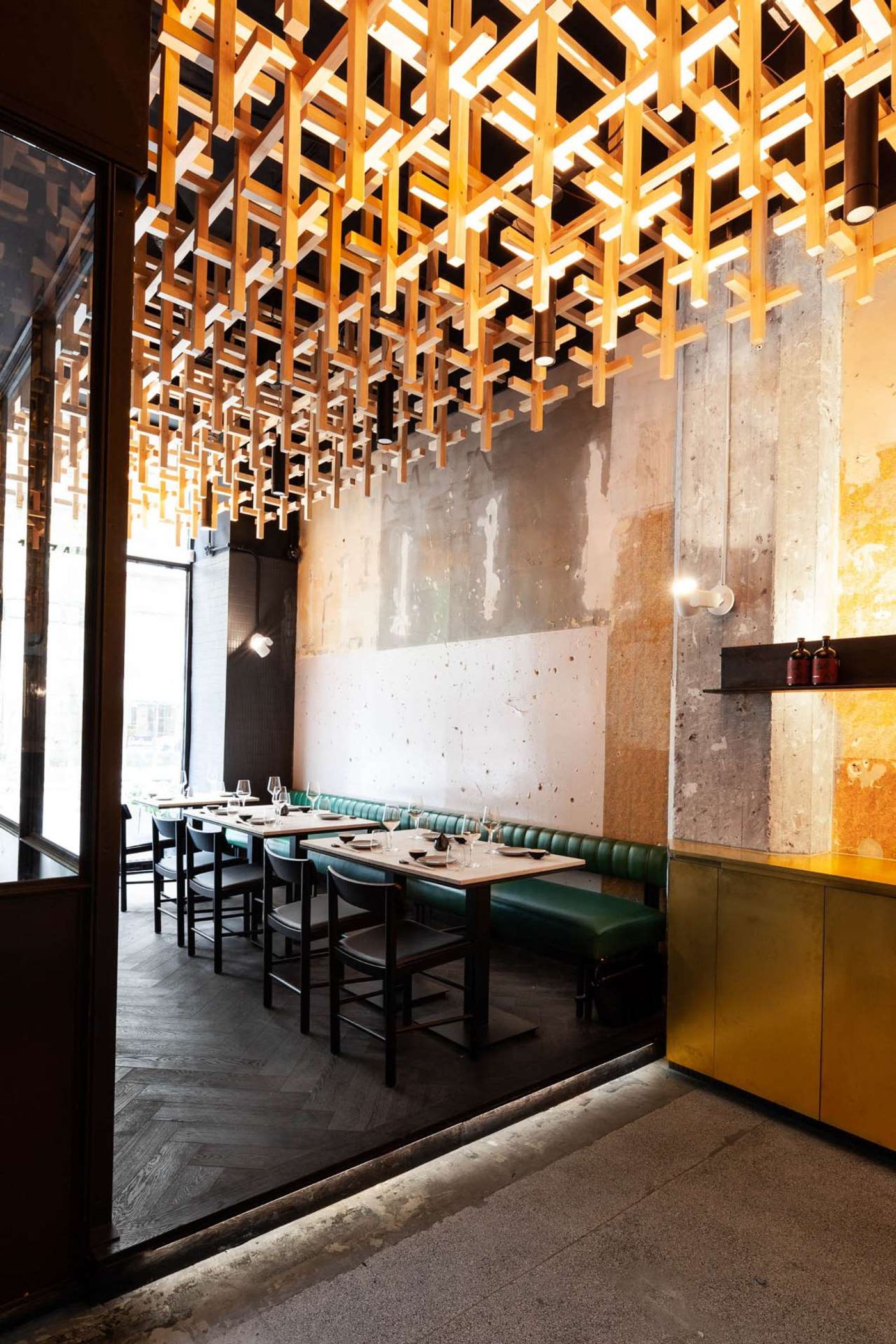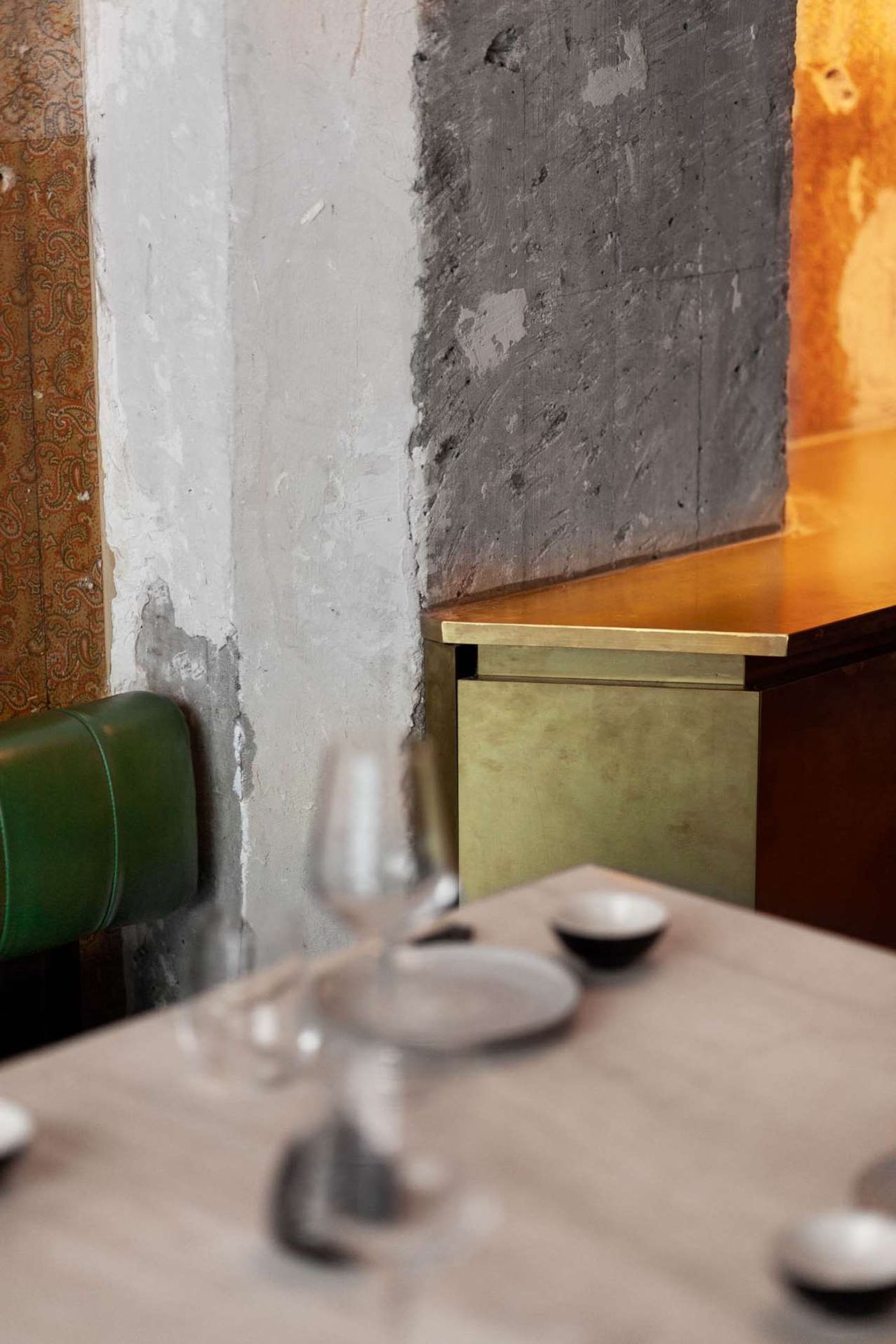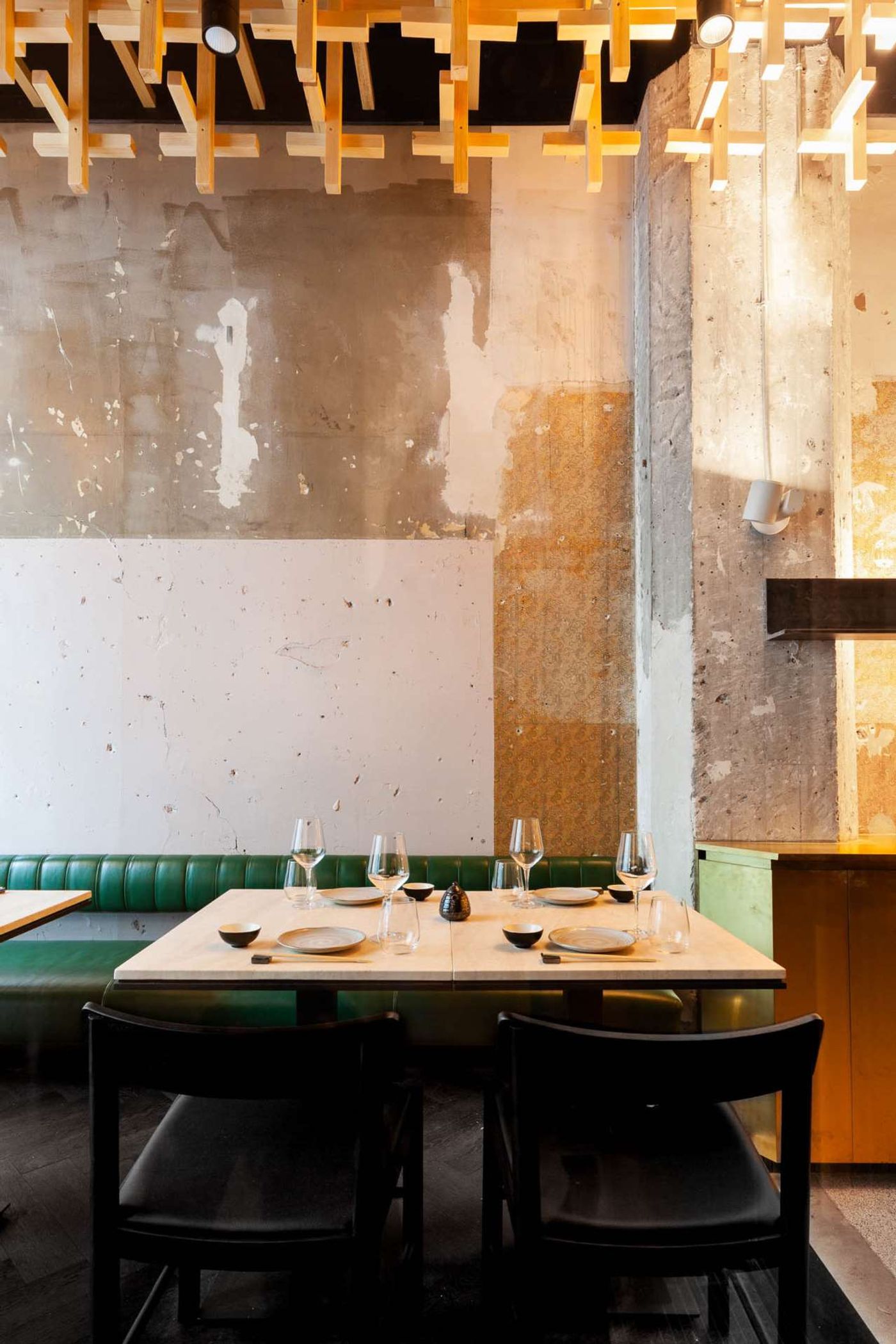
RYÙ Peel: A Sushi Bar in Montreal Embraces the Aesthetic Philosophy of Wabi-Sabi
Words by Yatzer
Location
1474 Peel Street, Montreal, Quebec, Canada
RYÙ Peel: A Sushi Bar in Montreal Embraces the Aesthetic Philosophy of Wabi-Sabi
Words by Yatzer
1474 Peel Street, Montreal, Quebec, Canada
1474 Peel Street, Montreal, Quebec, Canada
Location
Located in downtown Montreal, Canada, RYÙ Peel, the fifth outpost of the Japanese sushi bar chain RYÙ, may have recently opened but it certainly has the charm and patina of a long established eatery, courtesy of Montréal-based studio Ménard Dworkind Architecture & design (MRDK) who instead of treating the space as a blank canvas, embraced the existing building fabric in all its layered history and ingrained imperfections. By introducing a contemporary design aesthetic that harmoniously combines industrial elements with handcrafted refinement, the restaurant seems to hover evocatively between past and future.
MRDK’s approach was based on the Japanese concept of Wabi-Sabi, a world view underpinned by a less-is-more sensibility (“wabi”) and the importance of authenticity over perfection (“sabi”). The former is embodied in the interior design’s minimalist aesthetic and understated elegance while the latter is distilled in the preservation of the patchwork of plaster, paint, and wallpaper that was revealed during the building works. Whereas most architects would have excised all traces of past occupants, in this case, the building’s walls have been turned into an in-situ archaeological display where peeling wallpaper, decaying plasterwork, exposed concrete and hand-drawings comprise a visual palimpsest whose beauty lies in its myriad of imperfections.
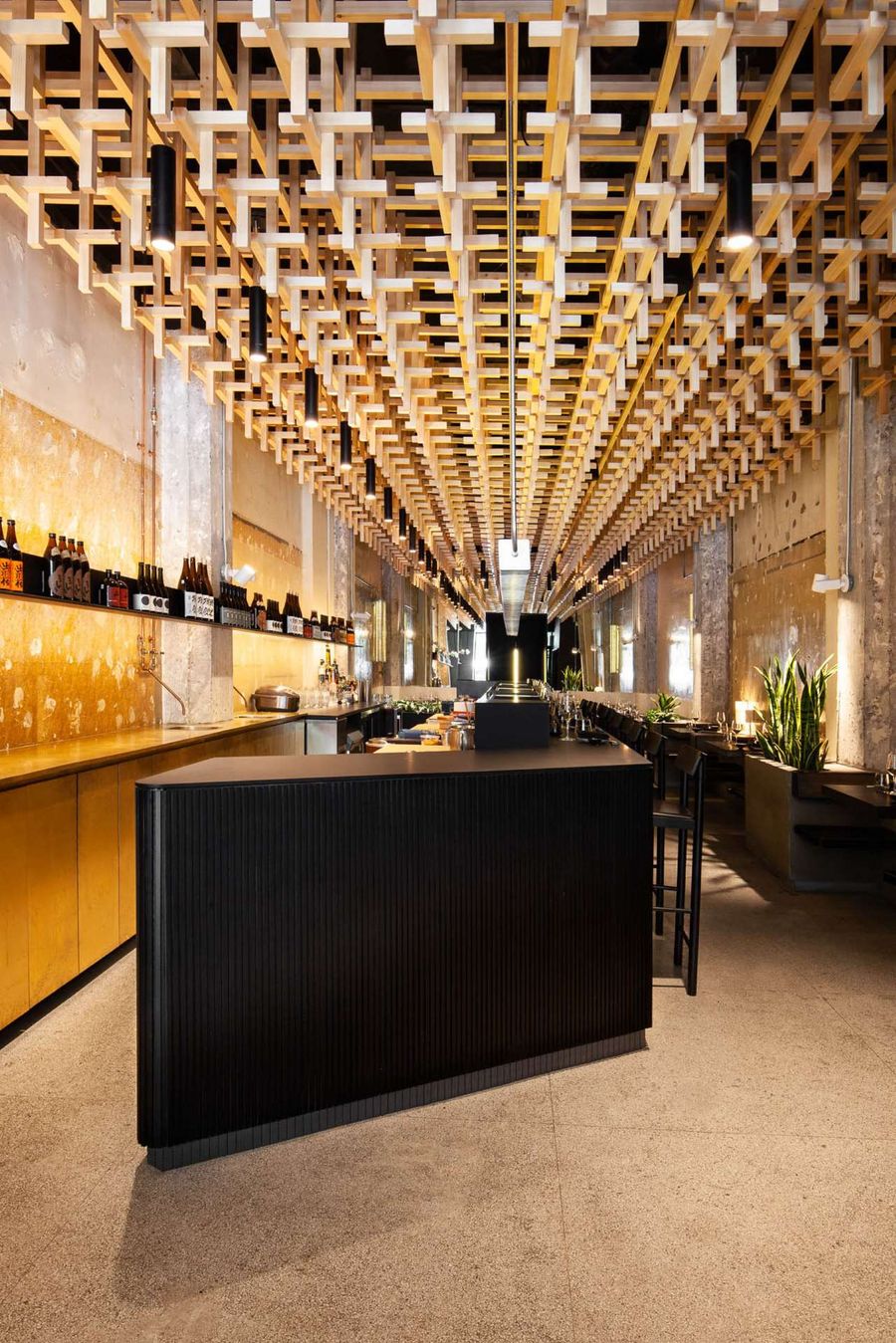
Photo by David Dworkind.
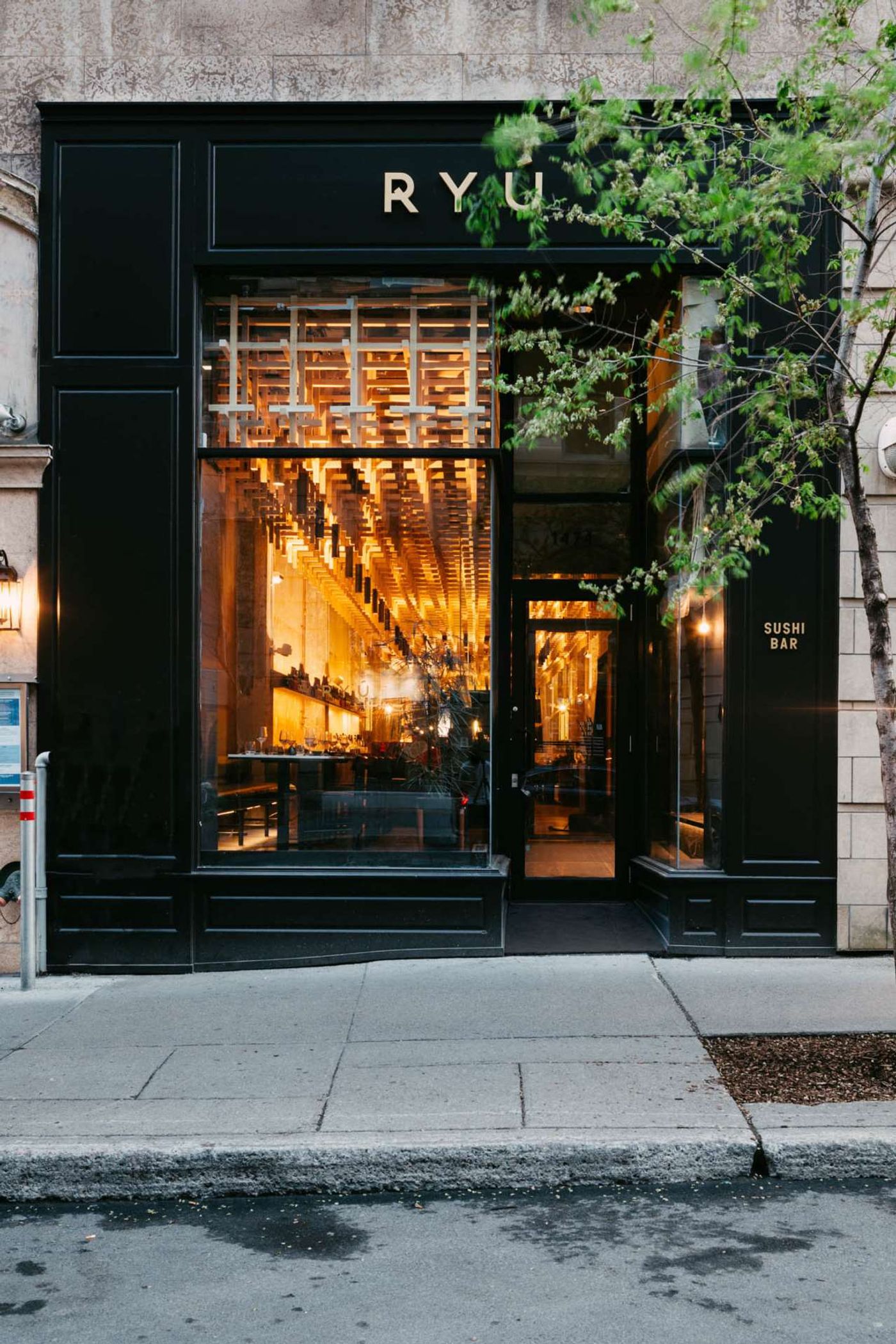
Photo by David Dworkind.

Photo by David Dworkind.
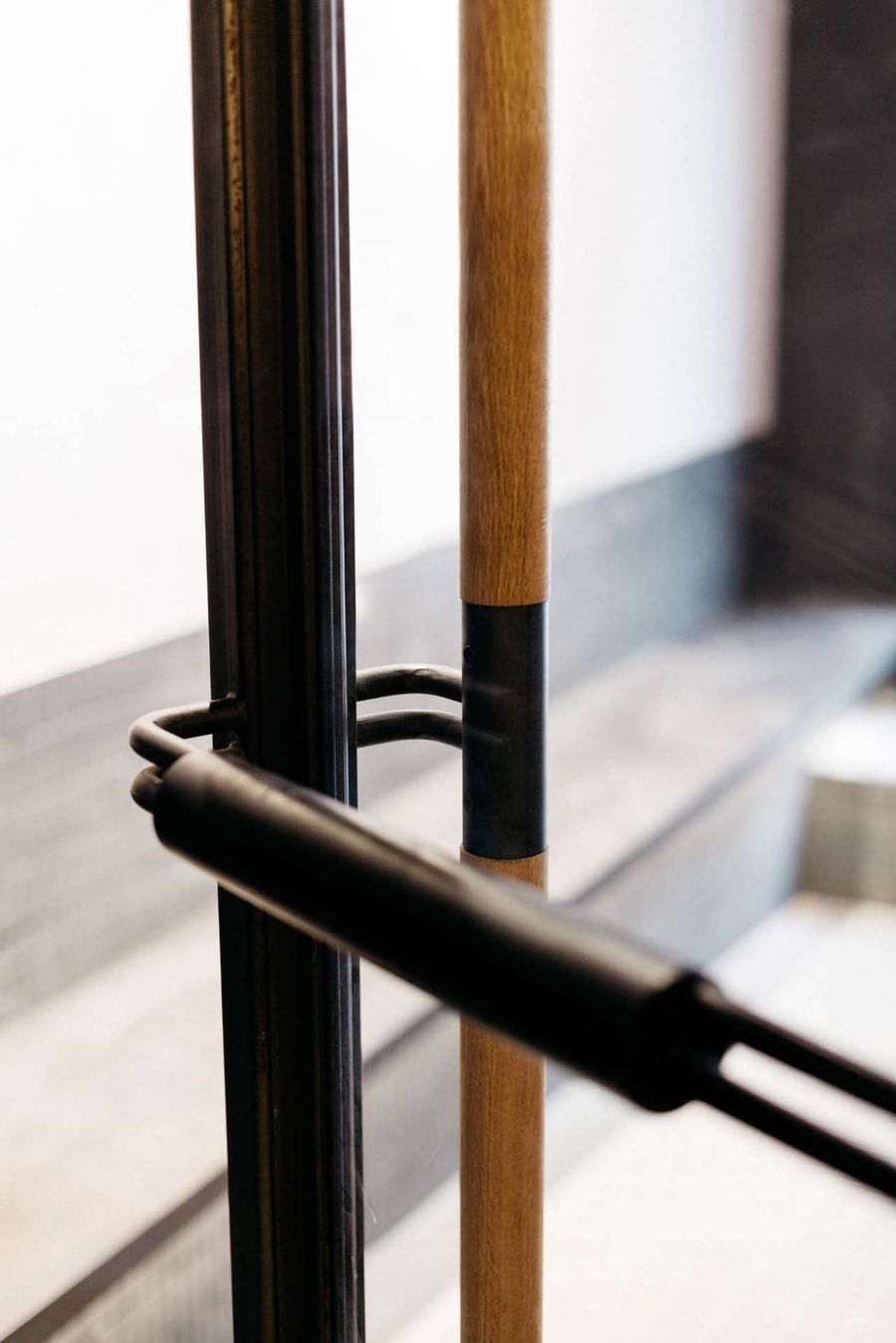
Photo by David Dworkind.

Photo by David Dworkind.
The wear and tear of the exposed building fabric is boldly complemented by a series of architectural interventions showcasing subtle sophistication and detailed craftsmanship. Running the entire length of the space, a suspended, sculptural installation of interconnected wooden battens alludes to traditional Japanese woodwork while also concealing the service ducts on the ceiling. Just as dramatic is the long bar counter in the centre of the restaurant that breaks down the elongated floor plan into front, middle and back sections. Made from Polaris, a synthetic matte black material with a velvety smoothness, and featuring gently curved edges, the bar counter is a paradigm of contemporary minimalism and detailed refinement, as is the linear light fitting suspended above, which is made of 370 pieces of laser cut aluminium spaced with brass sleeves—a design that is also shared by several wall scones—and the monolithic brass back bar, above which a 10-metre-long steel bracket anchored on the columns displays over 100 bottles of sake and Japanese whisky.
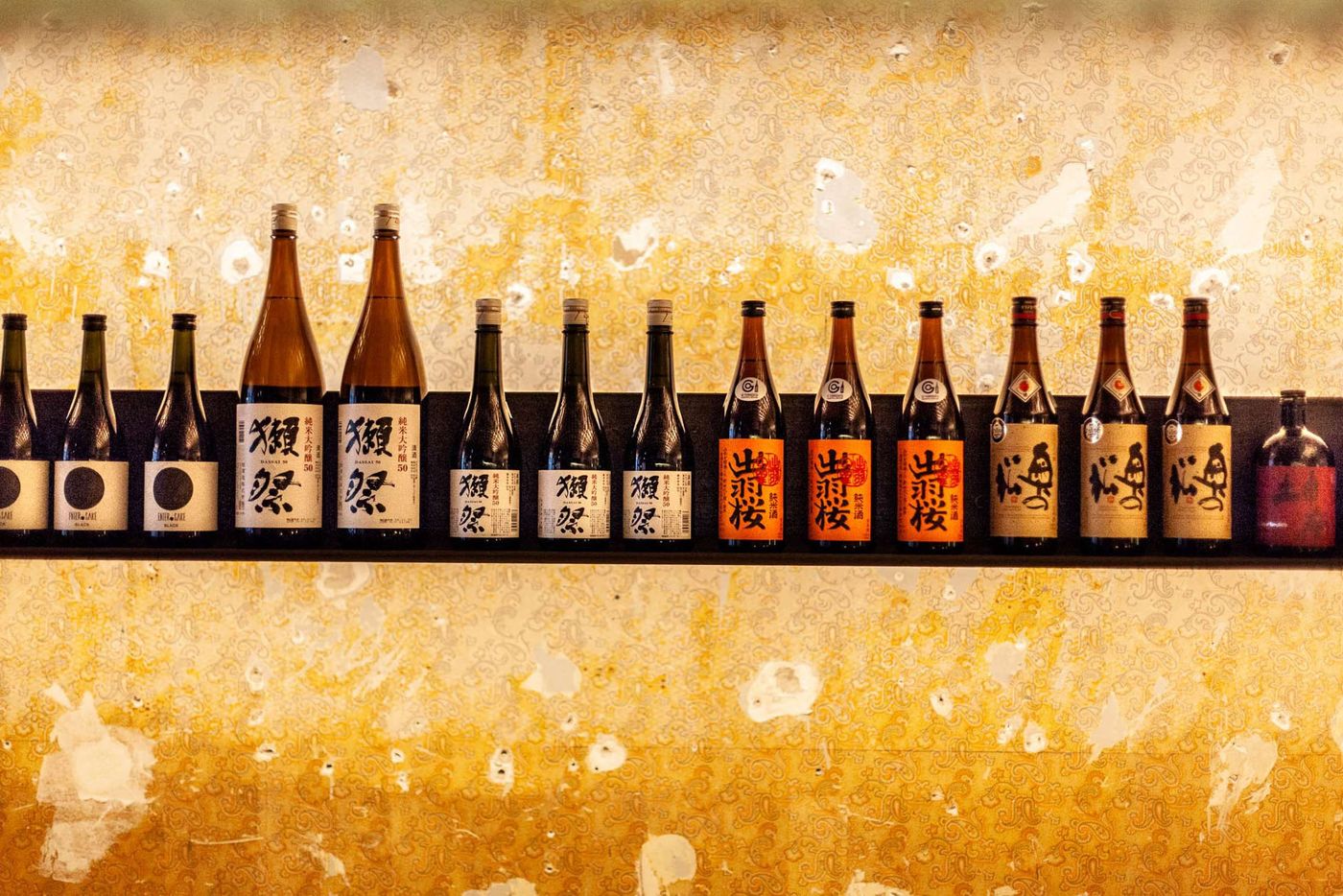
Photo by David Dworkind.
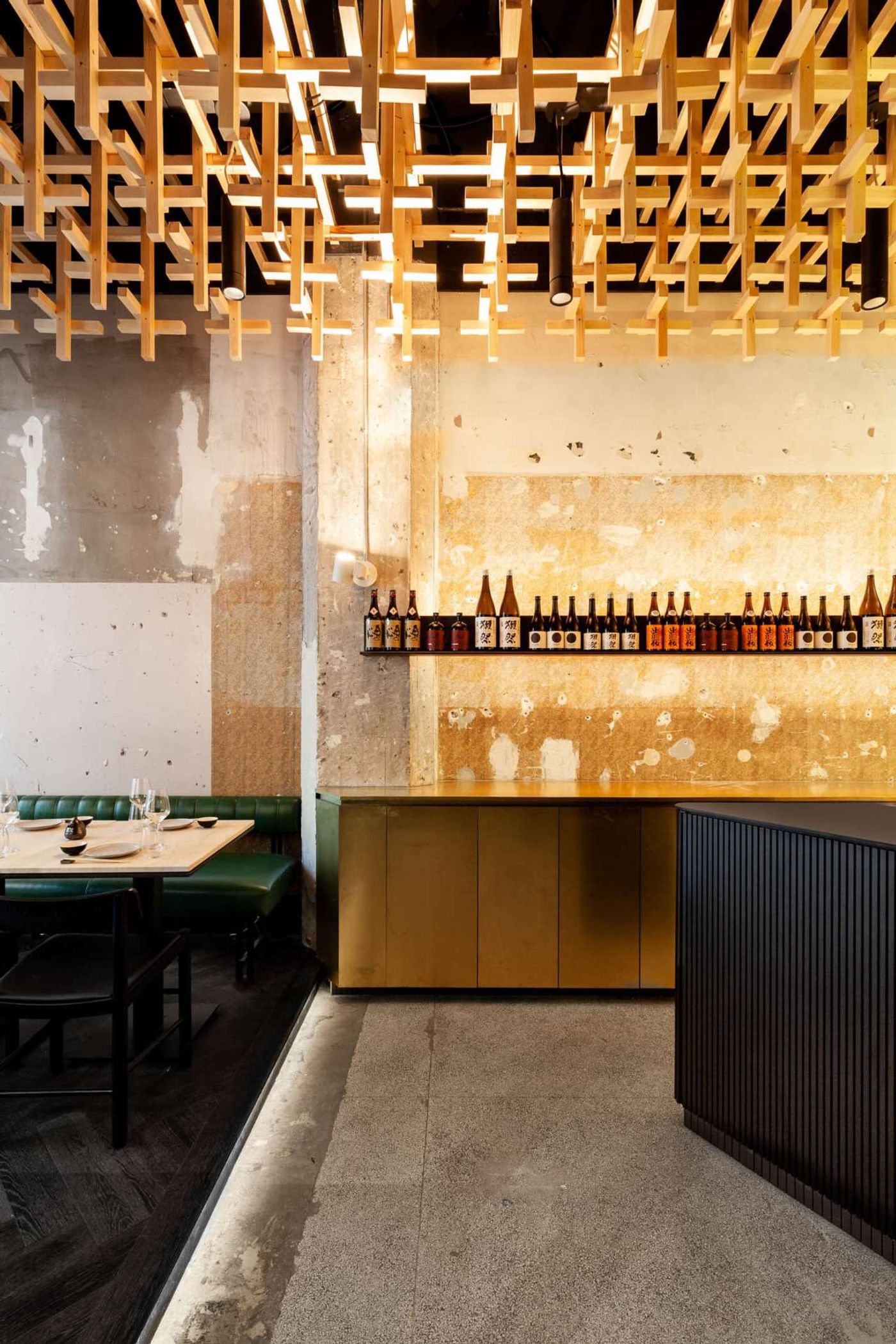
Photo by David Dworkind.
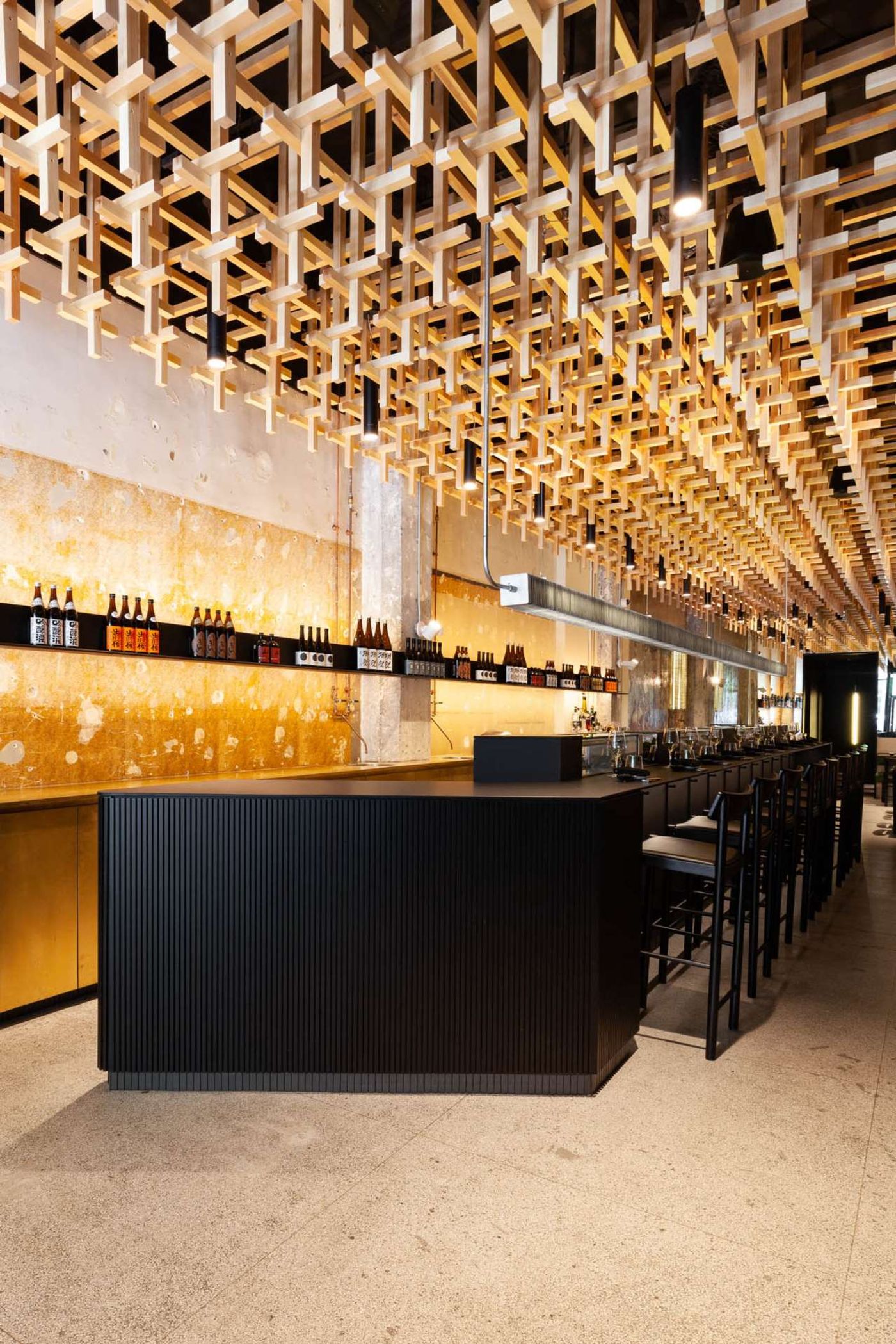
Photo by David Dworkind.
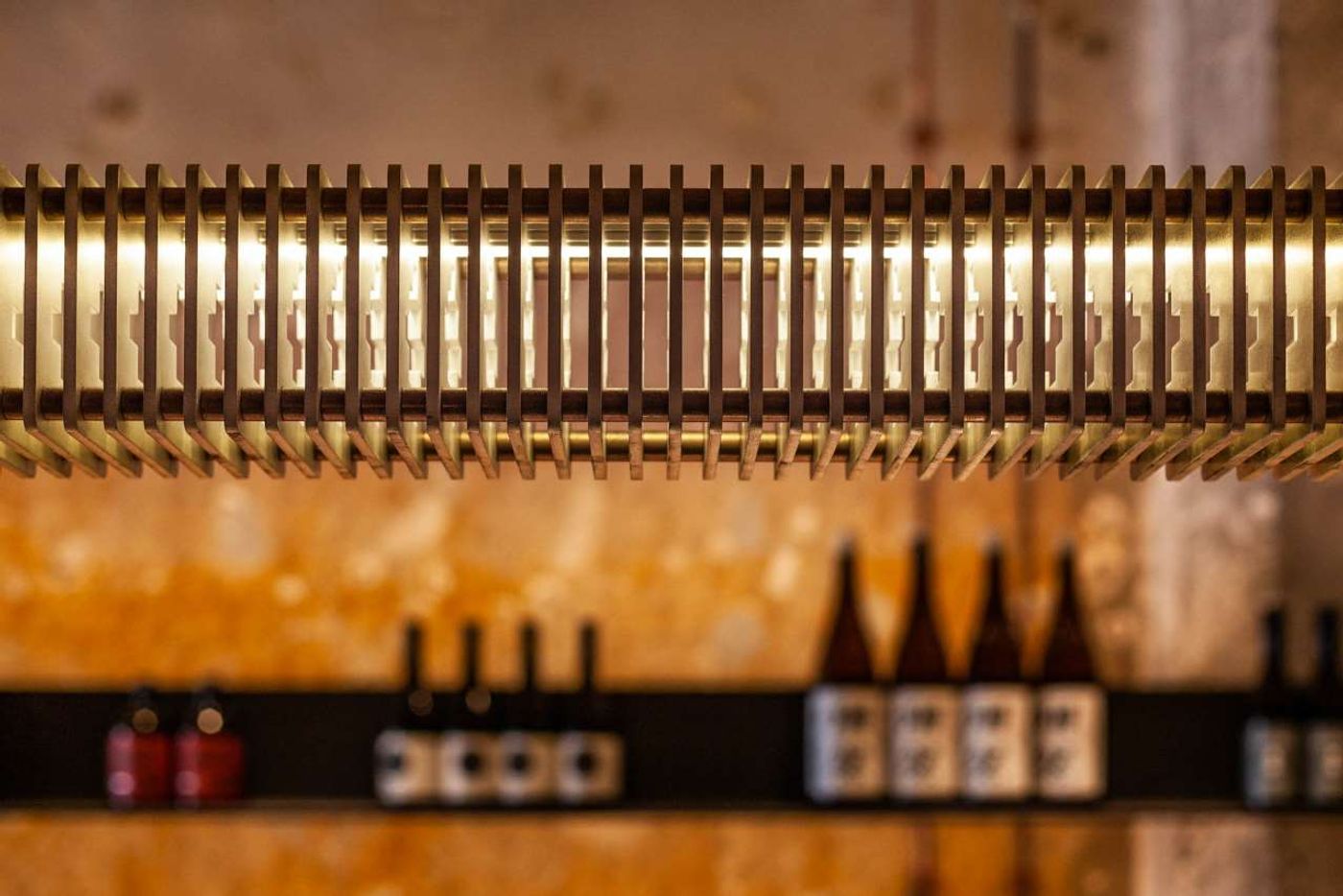
Photo by David Dworkind.
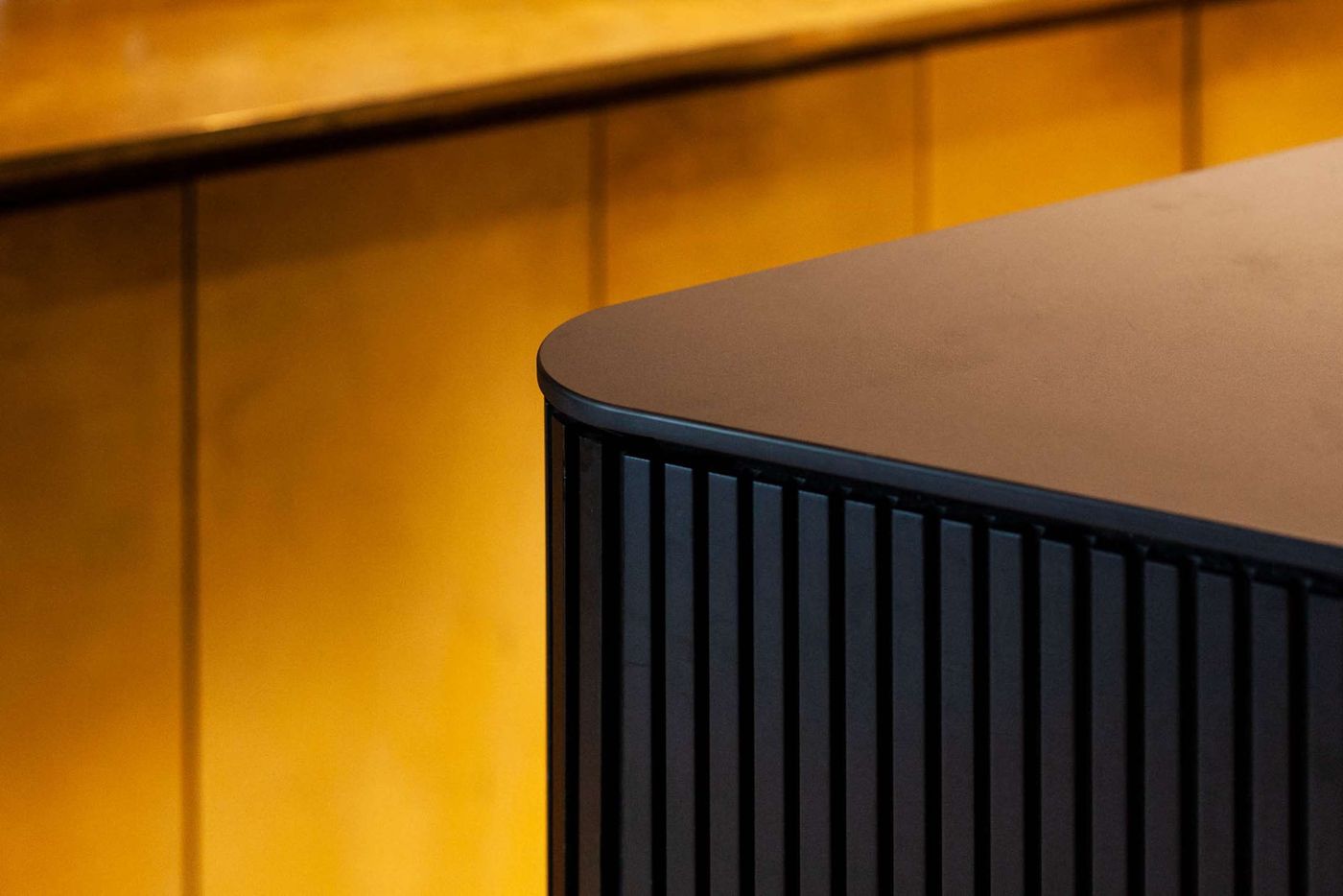
Photo by David Dworkind.

Photo by David Dworkind.
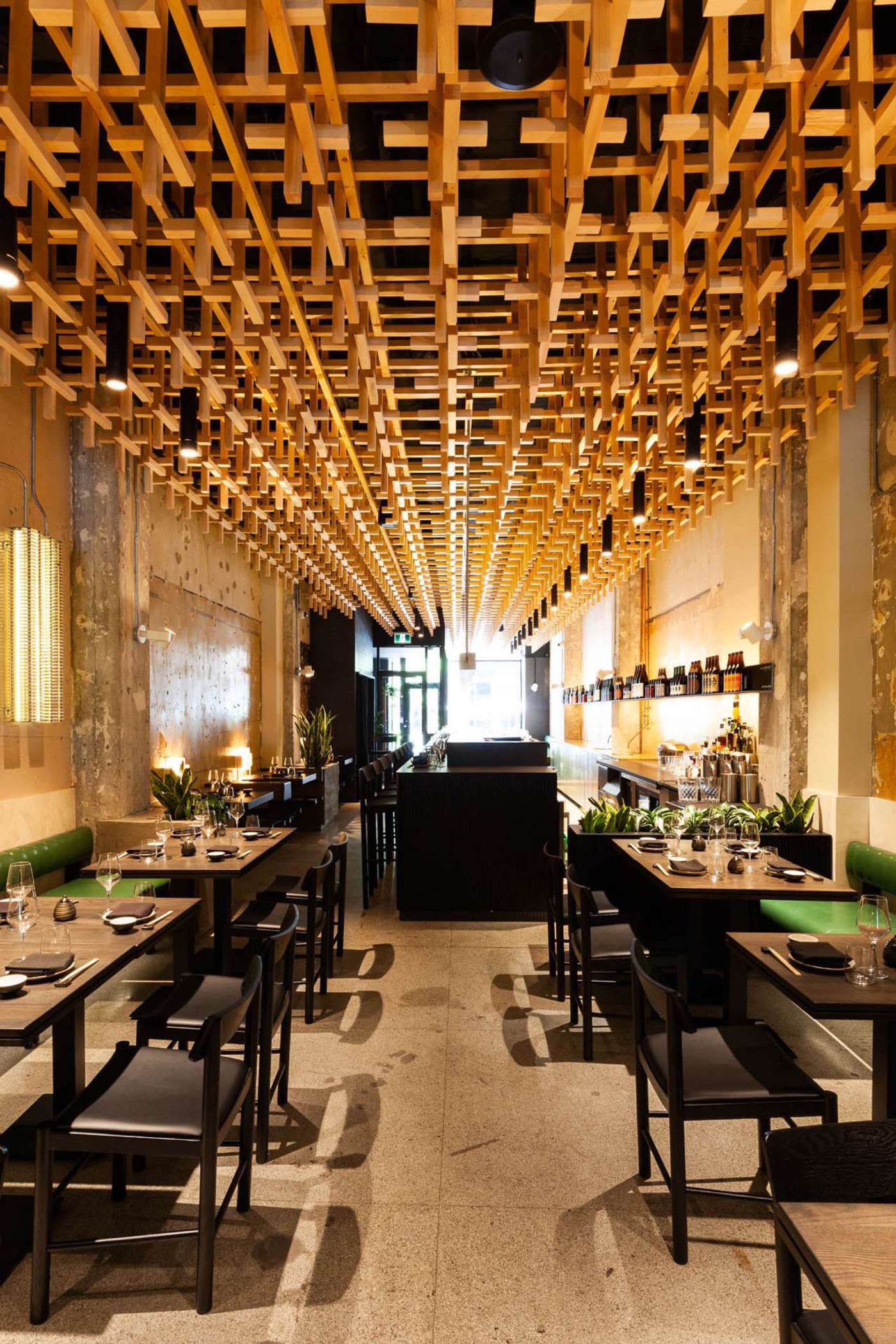
Photo by David Dworkind.
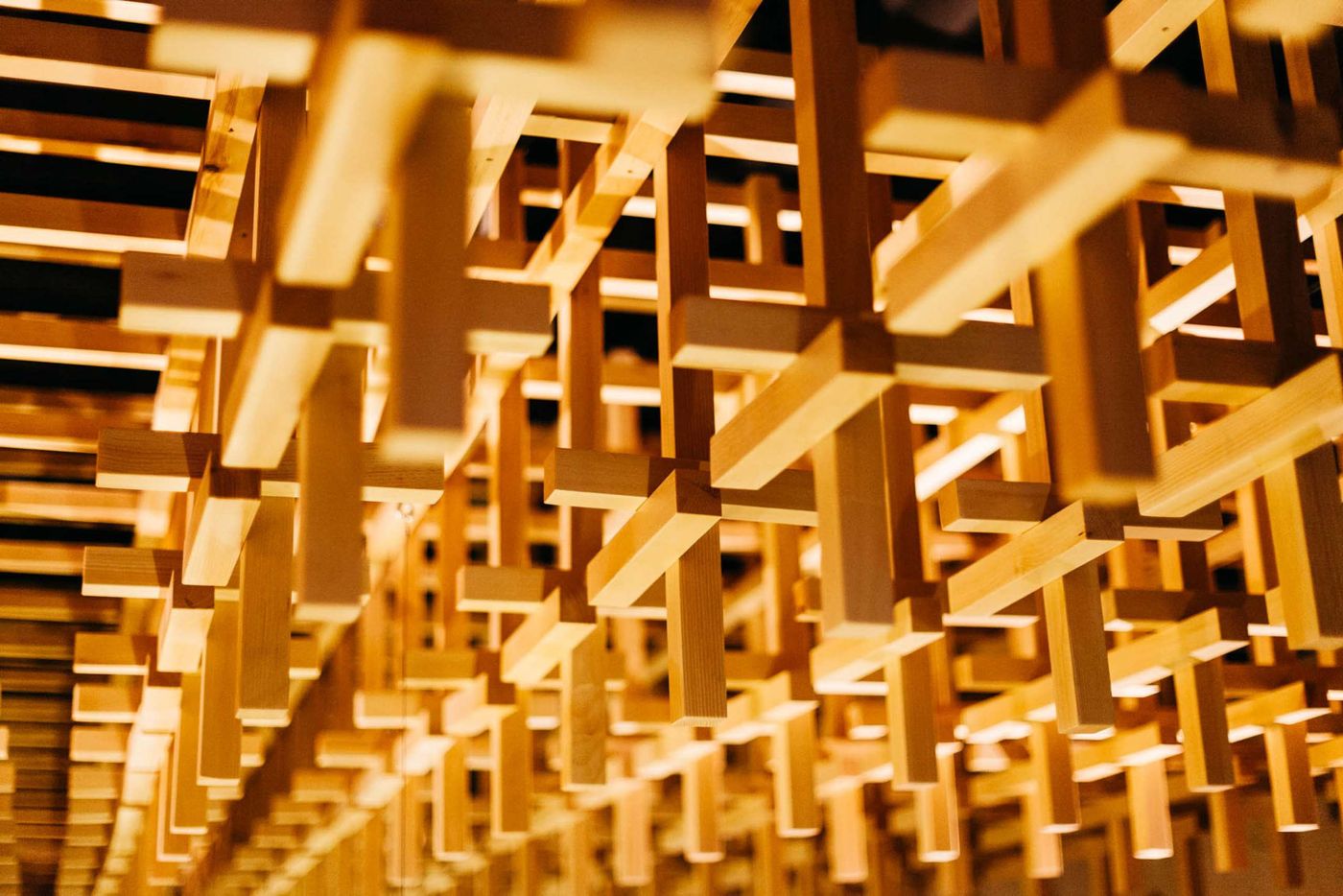
Photo by David Dworkind.
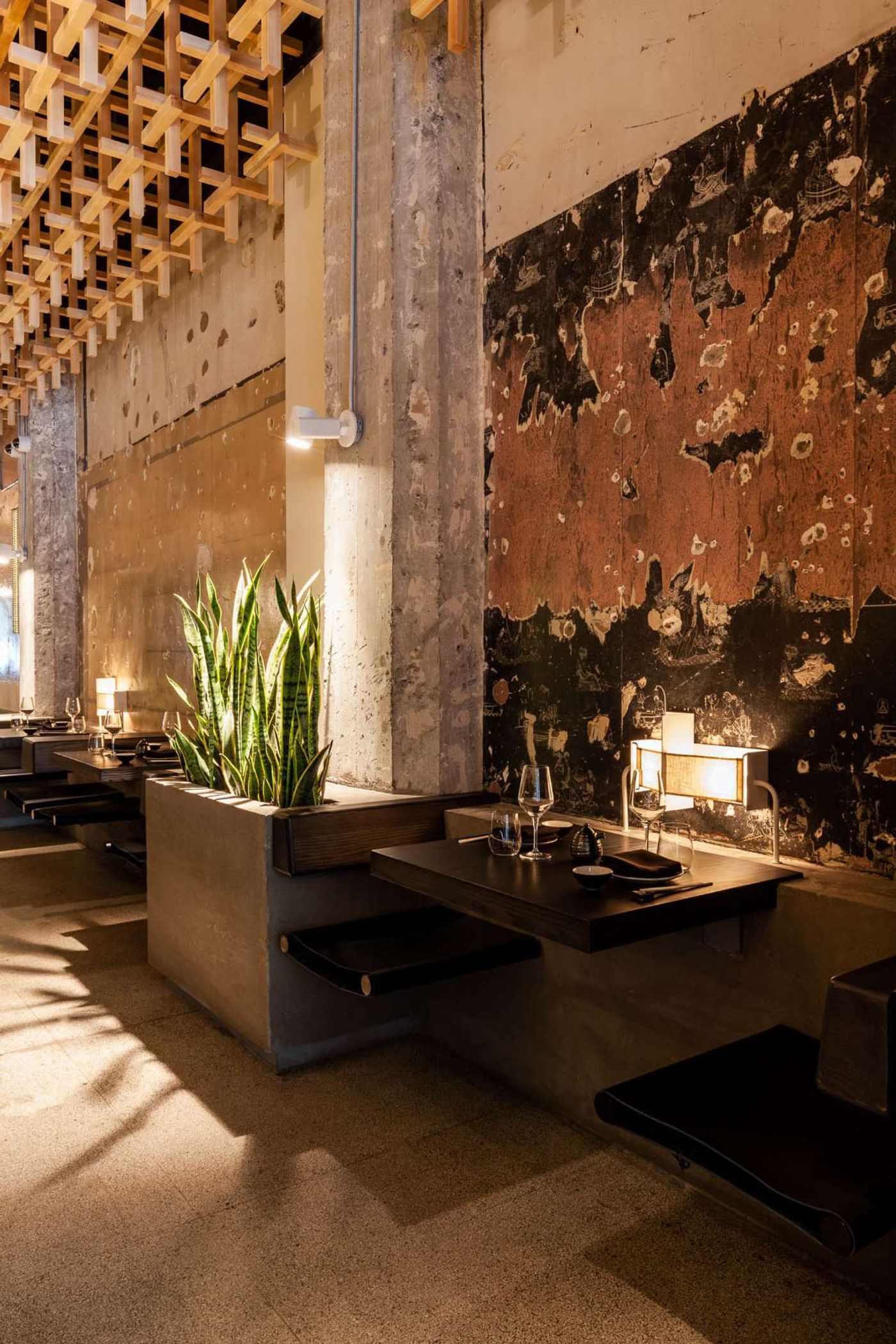
Photo by David Dworkind.

Photo by David Dworkind.
The unexpected buoyancy of the bottle-displaying steel bracket is echoed by the cantilevered seating on the opposite wall. Ingeniously supported on steel tubes jutting out of the concrete wall that have been wrapped in dark brown leather or timber veneer, the construction industriously combines a handcrafted elegance with a DYI sensibility also reflected in the bespoke tables lamps made of folded steel and stretched linen. Meanwhile, green leather sumptuously upholstered banquette seating in the front and back of the restaurant along with exotic vegetation planted in concrete planters counterbalance the predominant earthy colour palette while further contributing to the tactile richness of the interiors.
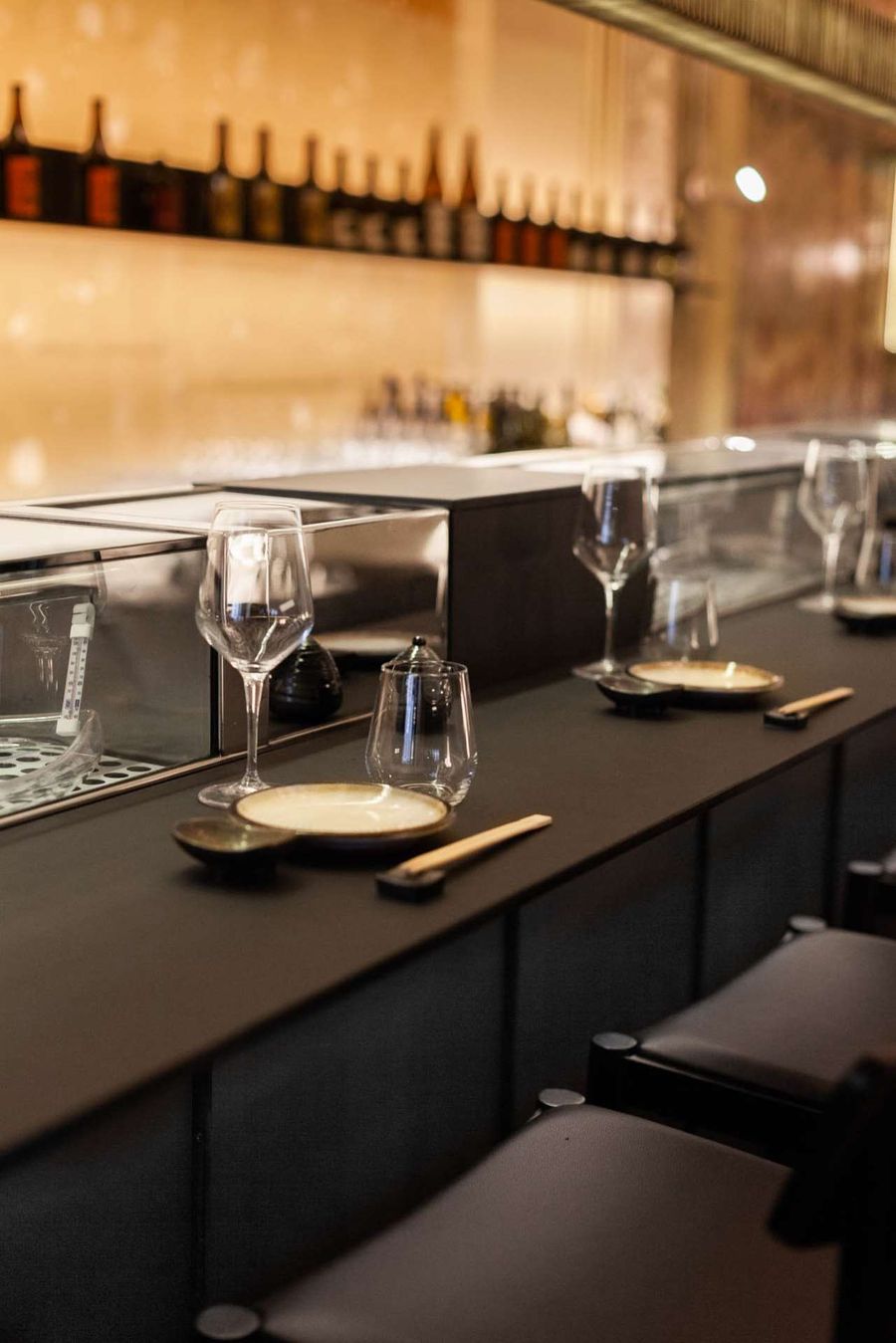
Photo by David Dworkind.
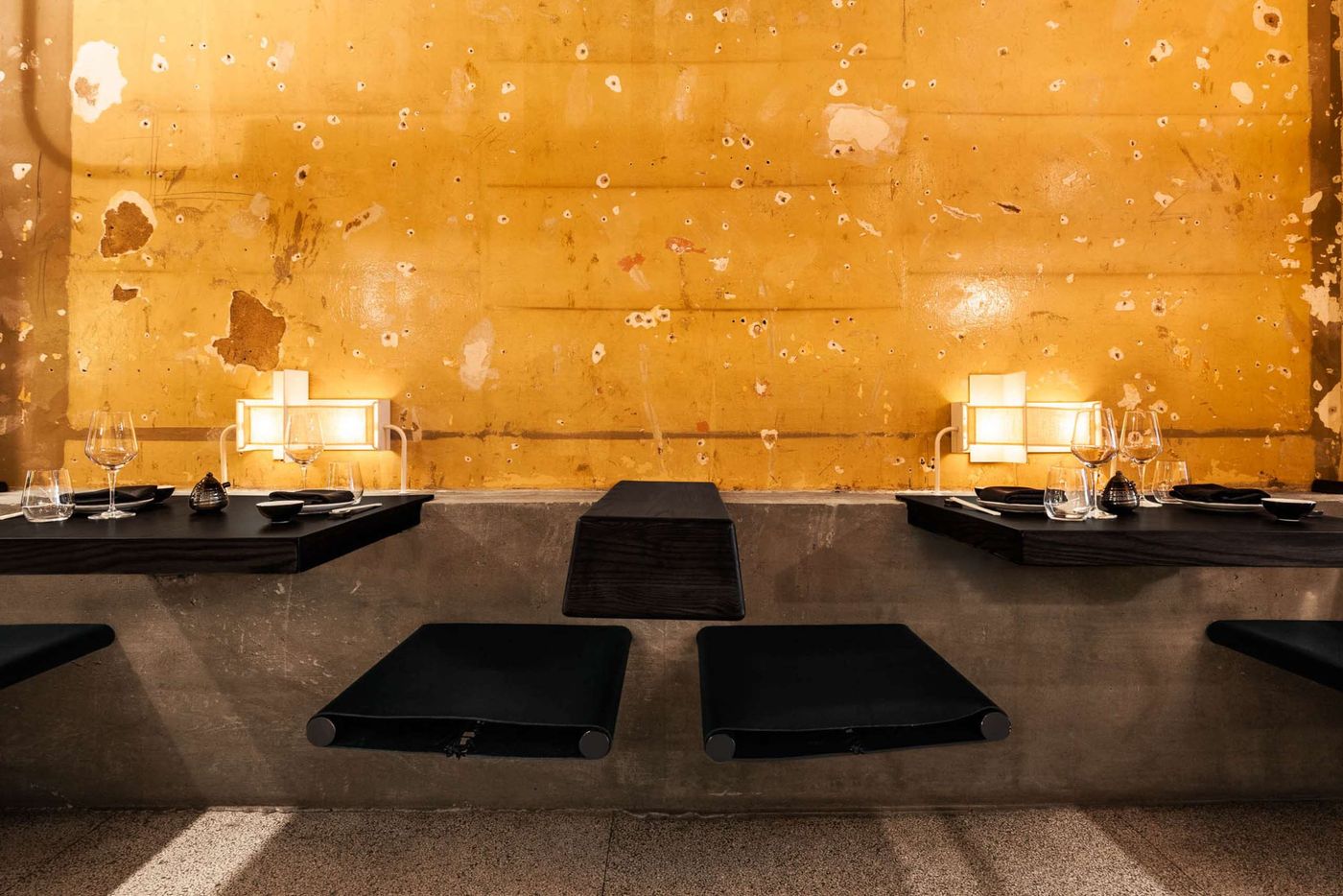
Photo by David Dworkind.
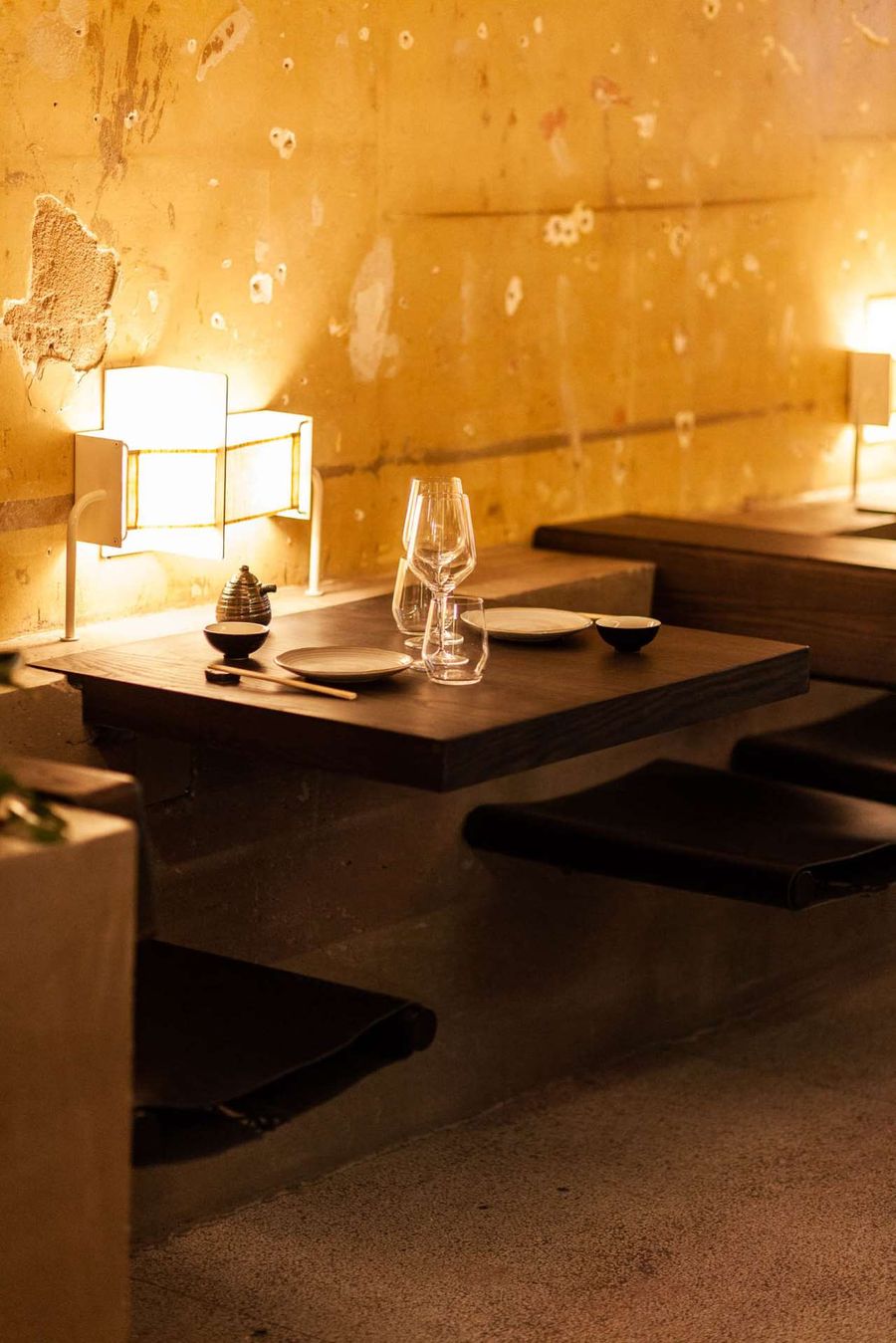
Photo by David Dworkind.

Photo by David Dworkind.
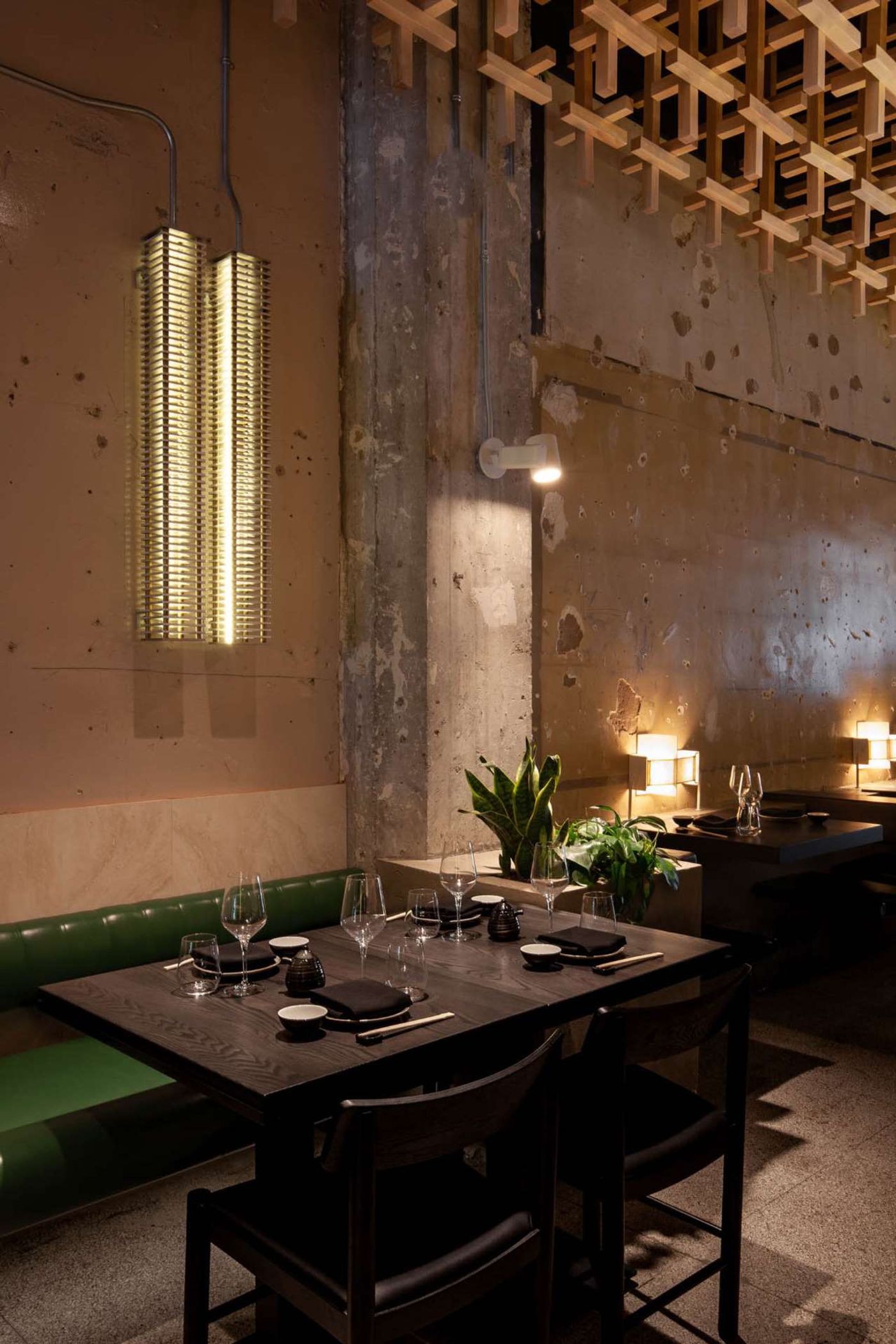
Photo by David Dworkind.
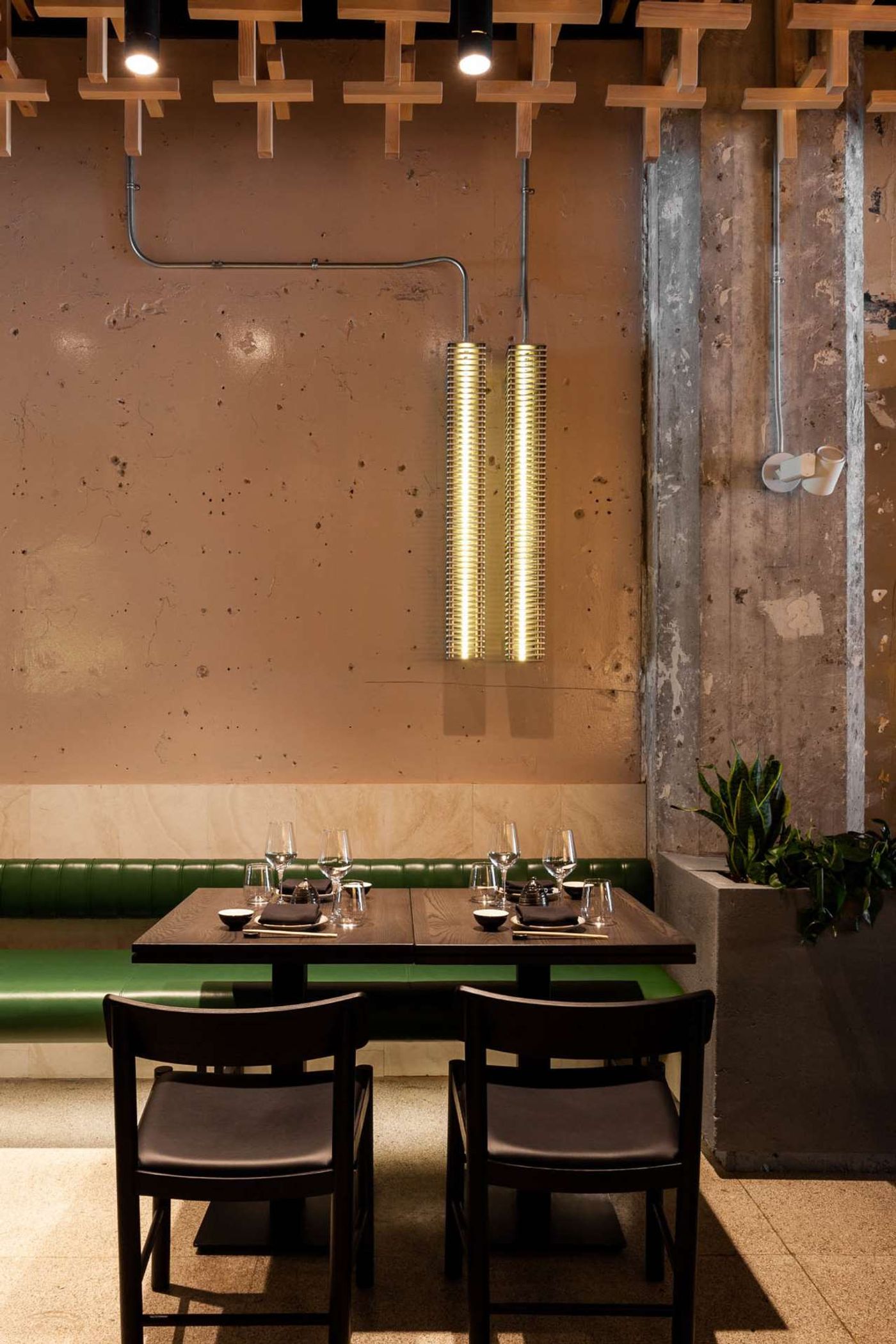
Photo by David Dworkind.
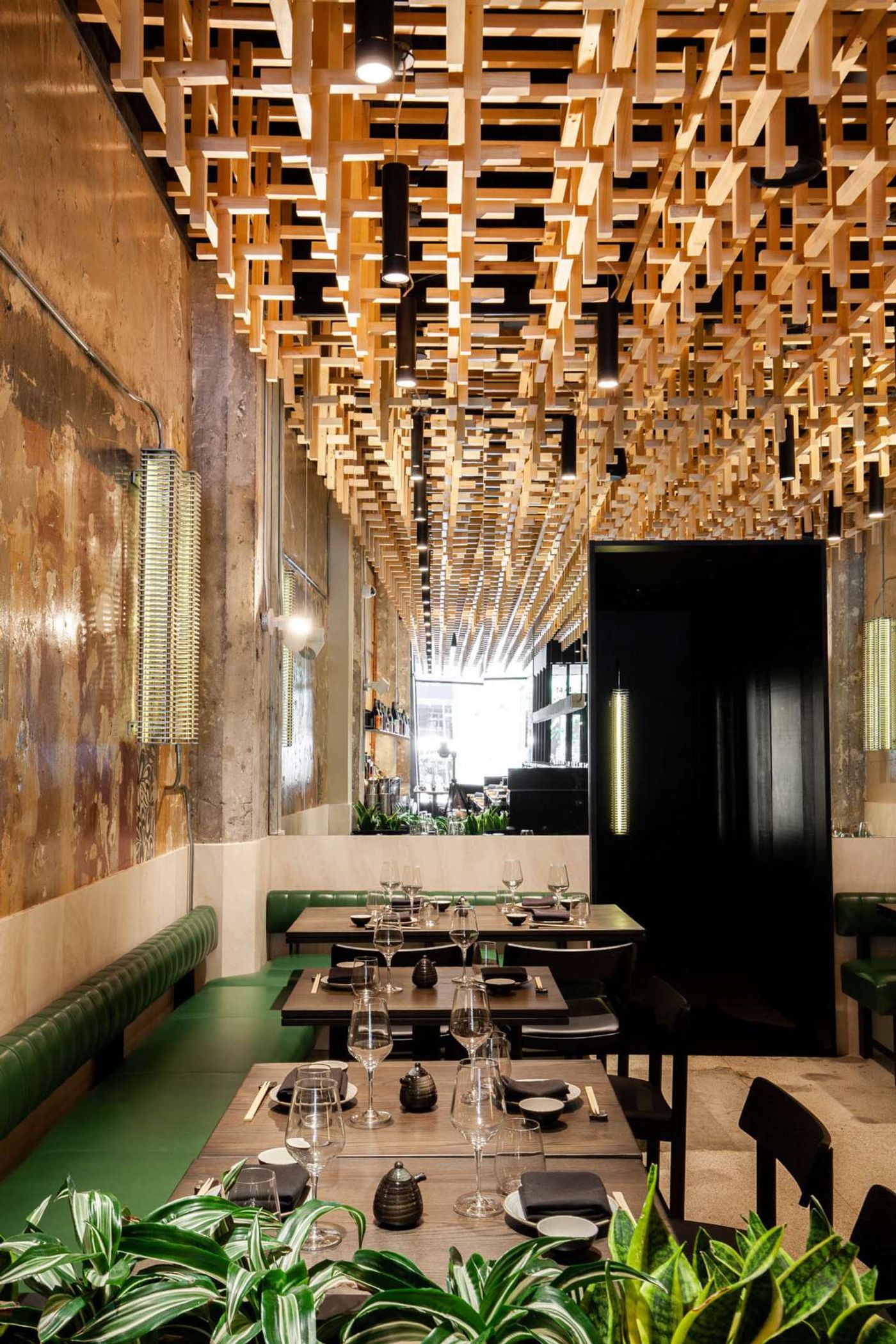
Photo by David Dworkind.
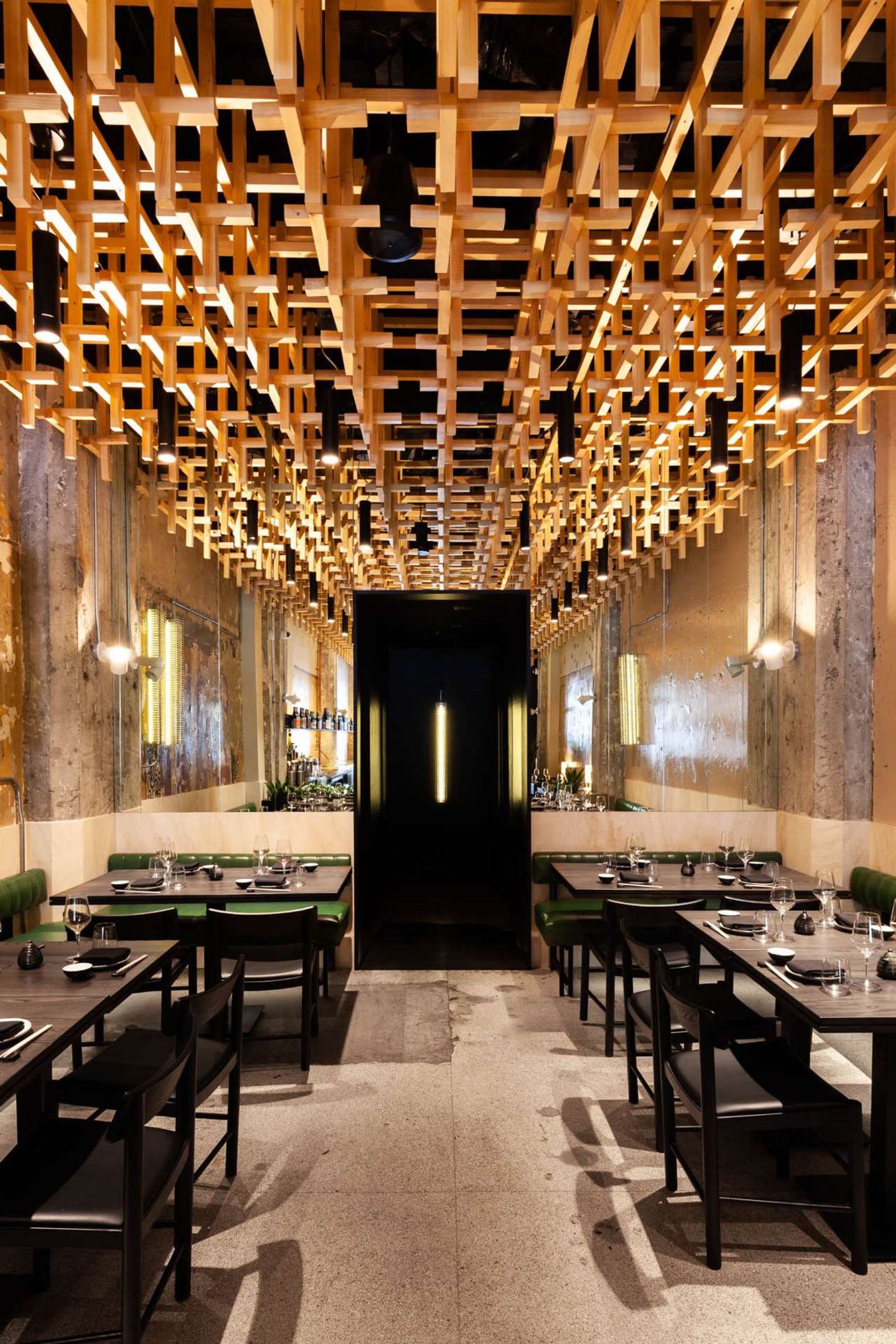
Photo by David Dworkind.

Photo by David Dworkind.

Photo by David Dworkind.
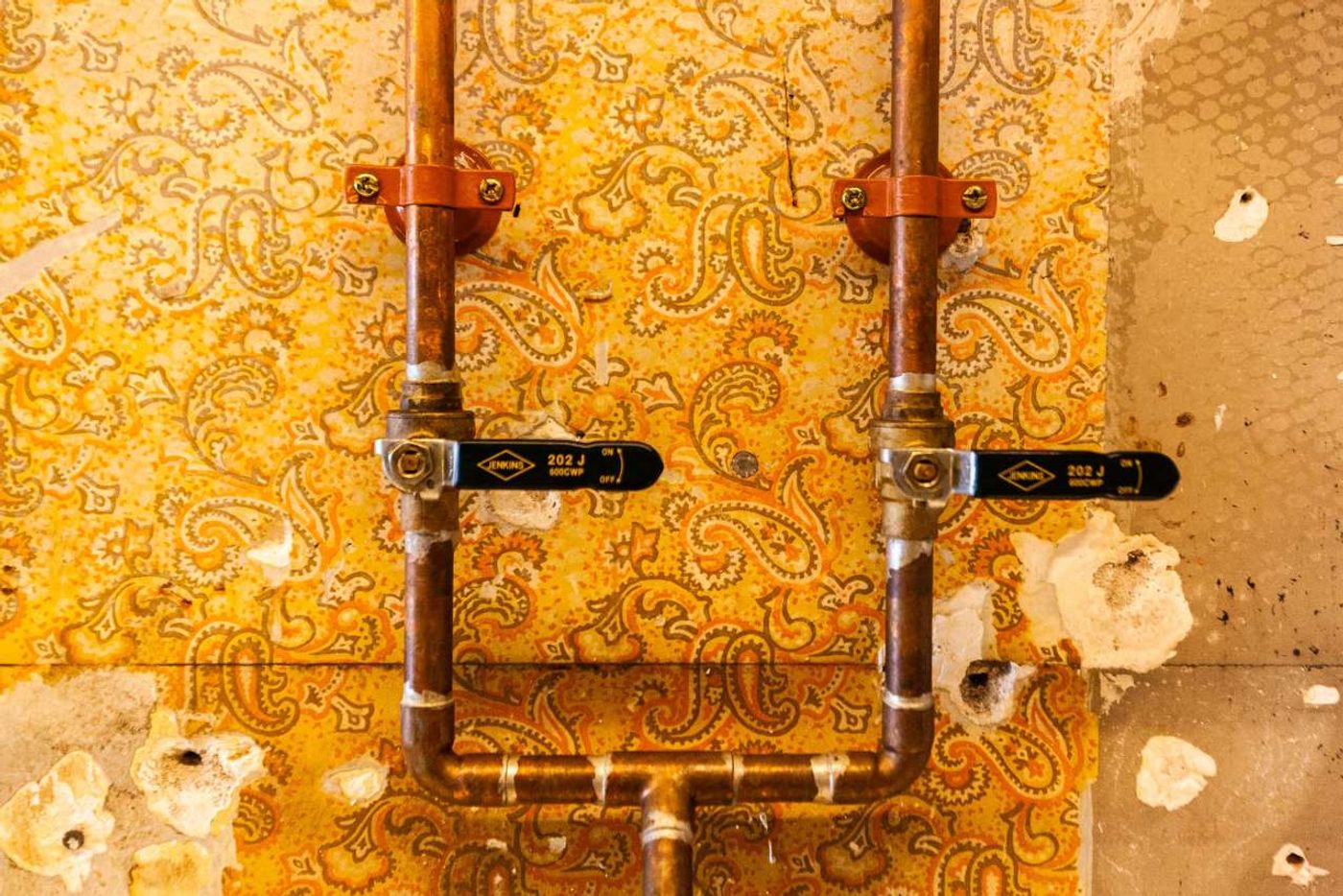
Photo by David Dworkind.
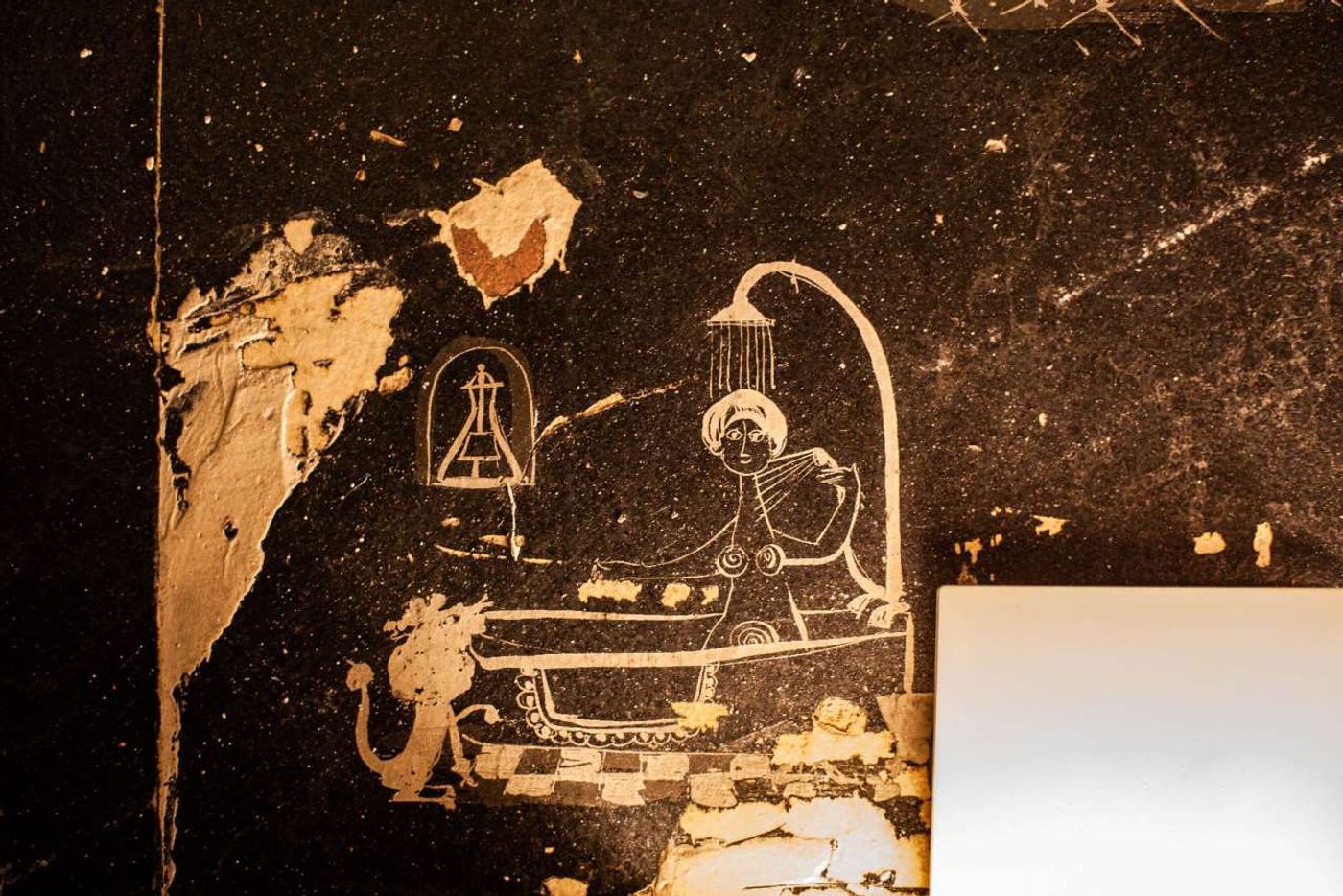
Photo by David Dworkind.
